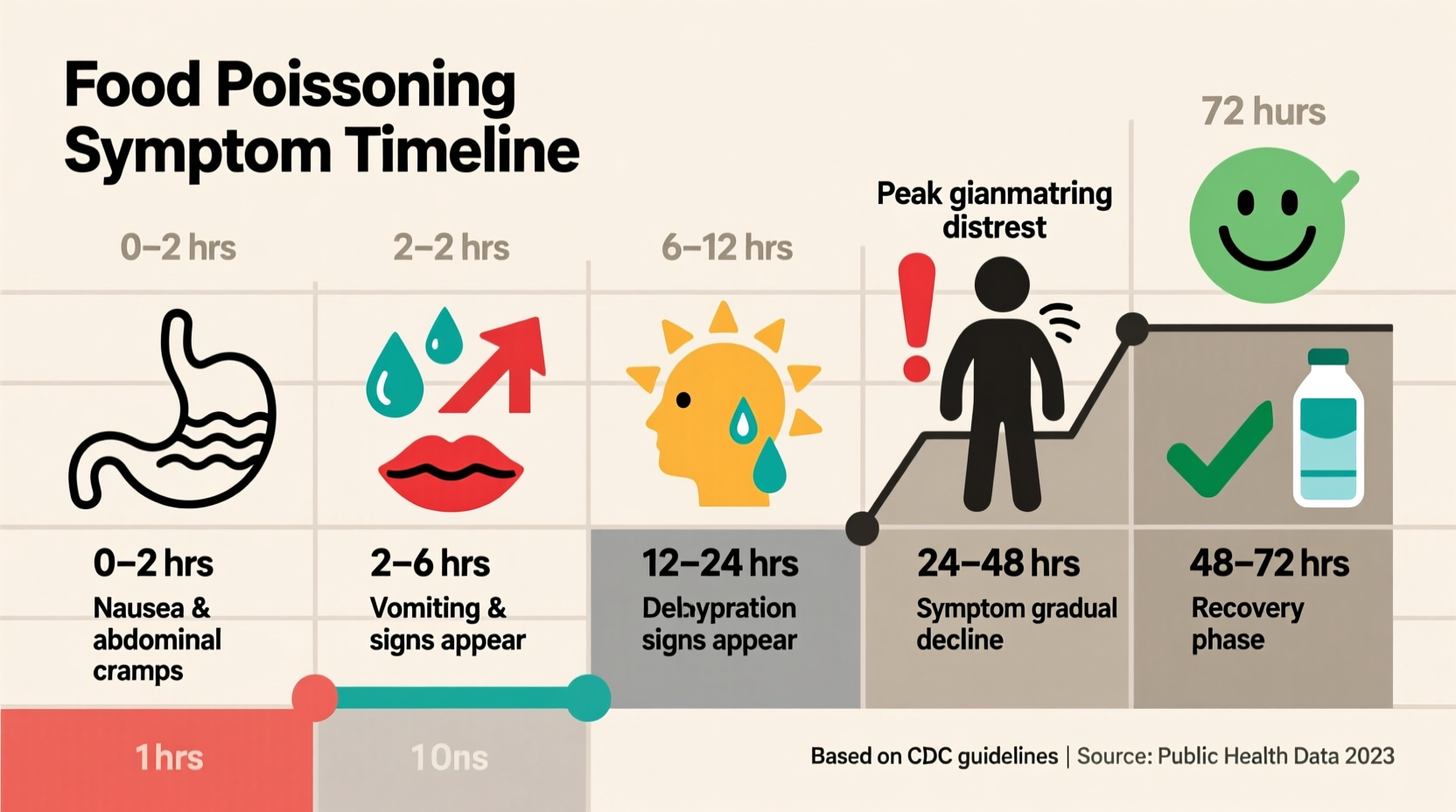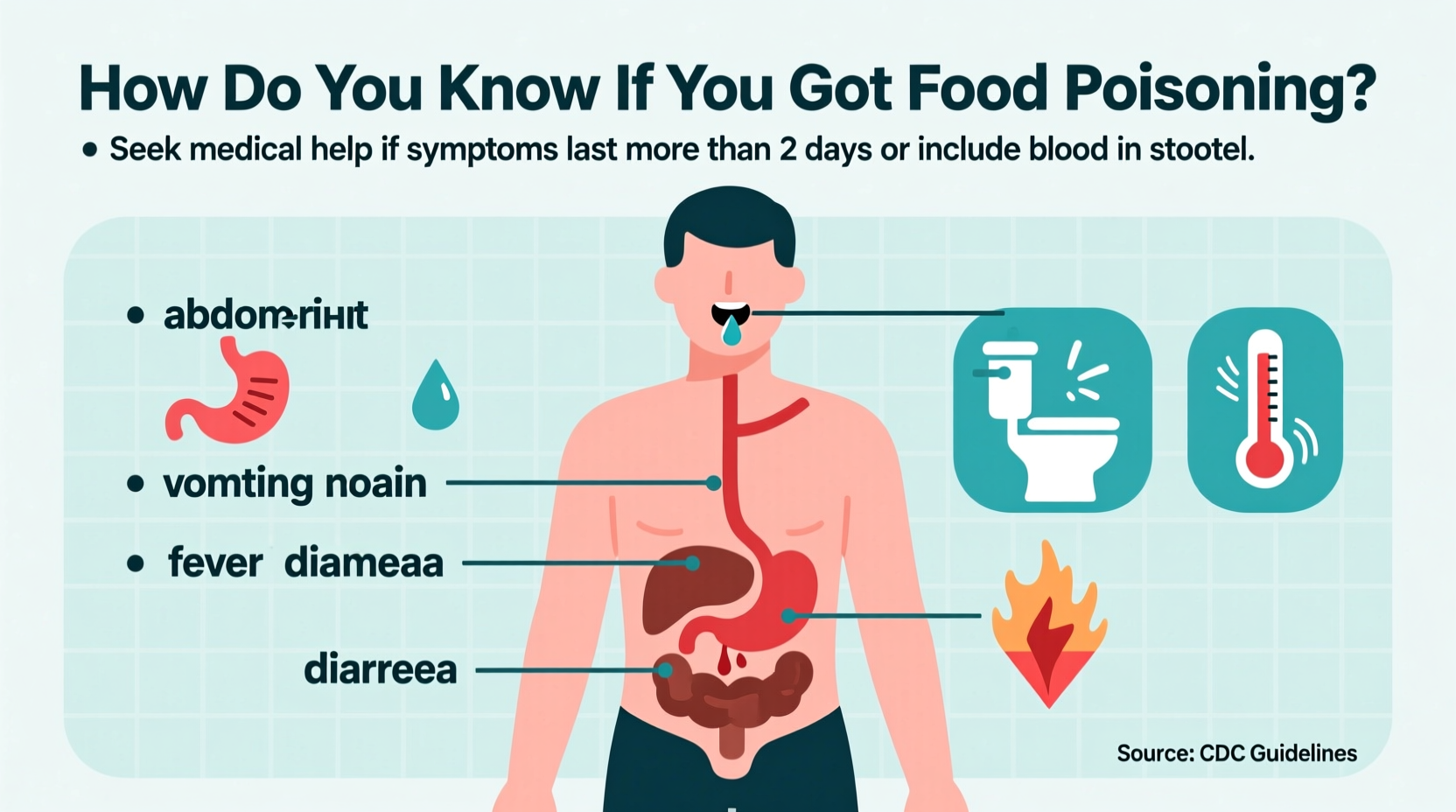Recognizing Food Poisoning: Key Symptoms and Timing
Food poisoning symptoms typically appear 30 minutes to 72 hours after consuming contaminated food. The specific timing depends on the pathogen causing your illness. According to the Centers for Disease Control and Prevention (CDC), the most common symptoms include:
- Sudden onset nausea and vomiting
- Watery diarrhea (sometimes bloody)
- Abdominal cramps and pain
- Fever (usually low-grade)
- Weakness and fatigue
Unlike viral gastroenteritis (stomach flu), food poisoning often affects multiple people who ate the same contaminated food. The FDA estimates that 48 million Americans experience foodborne illness annually, with most cases resolving within 1-3 days.
Food Poisoning vs. Stomach Flu: Critical Differences
| Symptom | Food Poisoning | Stomach Flu (Viral Gastroenteritis) |
|---|---|---|
| Onset Time | 30 min - 72 hours after eating | 12-48 hours after exposure |
| Duration | Usually 1-3 days | 1-2 days |
| Fever | Less common, usually mild | More common |
| Bloody Stool | Possible (especially with E. coli) | Rare |
| Affected Individuals | Multiple people who shared food | Spreads person-to-person |
Symptom Timeline: When to Worry
Understanding the progression of symptoms helps determine severity. The Mayo Clinic identifies these critical time markers:
- 0-6 hours: Rapid onset suggests chemical toxins (like Staphylococcus aureus) - requires immediate attention if severe vomiting occurs
- 6-24 hours: Typical for Salmonella, E. coli, or Campylobacter infections
- 24-72 hours: Often indicates norovirus or other viral causes
- Over 72 hours: May indicate parasitic infection like Giardia

When to Seek Medical Help: Critical Warning Signs
While most food poisoning cases resolve without treatment, certain symptoms require immediate medical attention. The CDC recommends contacting a healthcare provider if you experience:
- Diarrhea lasting more than 3 days
- Severe dehydration (dry mouth, dizziness, reduced urination)
- Bloody stool or vomit
- High fever (over 102°F/38.9°C)
- Neurological symptoms like blurred vision or muscle weakness
Special populations including infants, elderly adults, pregnant women, and immunocompromised individuals should seek medical care sooner. According to CDC guidelines, these groups face higher risk of complications from foodborne illnesses.
Immediate Action Steps
If you suspect food poisoning, follow these evidence-based steps:
- Stop eating: Give your digestive system time to recover
- Hydrate: Sip clear fluids or oral rehydration solutions
- Monitor symptoms: Note onset time, frequency of vomiting/diarrhea
- Preserve evidence: Save any remaining suspect food for potential testing
- Don't take anti-diarrheals: Unless recommended by a doctor, as they can prolong infection
Preventing Future Episodes
Understanding how you got food poisoning helps prevent recurrence. The FDA's Food Code guidelines emphasize these critical prevention strategies:
- Cook poultry to 165°F (73.9°C), ground meats to 160°F (71.1°C)
- Refrigerate perishables within 2 hours (1 hour if temperature exceeds 90°F/32.2°C)
- Wash hands thoroughly before handling food
- Avoid cross-contamination between raw and cooked foods
- Be cautious with high-risk foods: raw shellfish, undercooked eggs, unpasteurized dairy











 浙公网安备
33010002000092号
浙公网安备
33010002000092号 浙B2-20120091-4
浙B2-20120091-4